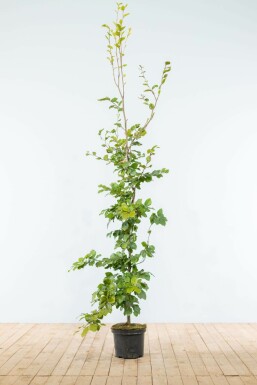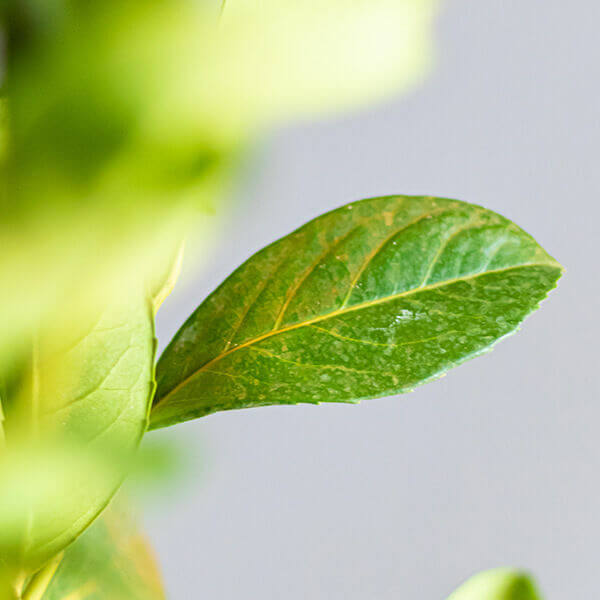Hedge Plants For Porch Edges
Hedge Plants For Porch Edges
Blog Article
Best Hedging Plants For Frosty Areas
Boost your garden's attraction with rich hedge varieties such as Yew (Taxus), Thuja, Laurel, Photinia, and Bamboo, commemorated for their structural stability and environmental advantages.
Yew and Thuja offer evergreen coverage and winter season strength, while Laurel provides quick growth and broad, fragrant leaves.
Photinia includes seasonal beauty with its vibrant red foliage, and Bamboo provides a low-maintenance, tranquil ambiance.
These hedges improve air quality, lower noise, and produce tranquil, personal spaces.
Appropriate planting, spacing, and upkeep ensure vigorous development and eco-friendly harmony.
Explore how these rich ranges can raise your garden's beauty and well-being.
Secret Takeaways
Change Your Garden With Lush Hedge Ranges
- Select Yew for its thick, evergreen growth and unrivaled longevity.
- Select Laurel for its quick development and broad leaves, ensuring quick privacy.
- Select Photinia for its dynamic seasonal foliage, which turns a striking dark red.
- Use Bamboo for a low-maintenance, winter-hardy hedge with visual appeal.
- Area plants 2-3 per meter and prune regularly for ideal growth and health.
Popular Hedge Plants
When transforming a garden with rich hedge ranges, it's necessary to consider popular hedge plants such as Yew, Thuja, Laurel, and Photinia due to their unique characteristics and benefits.
Yew (Taxus) is highly esteemed for its longevity and dense, green growth, making it a prime choice for enduring landscapes.
Thuja is kept in mind for its evergreen foliage and robust winter season strength.
Photinia includes seasonal vibrancy with red leaves that darken over time, creating dynamic visual appeal.
Laurel offers quick development and aromatic, broad leaves, suitable for fast privacy.
Additionally, Bamboo is an excellent choice for atmosphere, using a low-maintenance, winter-hardy choice that improves the garden's aesthetic with its elegant, swaying walking canes.
These choices accommodate a variety of horticultural requirements and choices.
Benefits of Garden Hedges
Garden hedges offer a multitude of advantages, making them an important addition to any landscape. These natural barriers are affordable to implement and supply considerable wind protection, boosting air flow and contributing to sound reduction. The dense foliage of hedges like Thuja and Beech makes sure privacy by blocking presence, producing a secluded and tranquil environment.
Hedges likewise play an essential function in microclimate policy, supplying a steady environment that fosters plant development and minimizes temperature level fluctuations. Their detailed leaf structures filter contaminants, enhancing air quality and contributing to a much healthier garden ecosystem.
Additionally, hedges excel in sound reduction, taking in and deflecting acoustic waves to lower ambient noise levels. This double functionality of offering both visual and acoustic personal privacy boosts the overall harmony and visual appeal of any garden.
Planting and Maintenance Tips
For an effective hedge, meticulous preparation of the planting area is important. Ensure the soil has appropriate pH and drain to support strong root advancement.
Space the plants appropriately for the picked species. Water the hedge frequently during its preliminary growth stage, changing as required with seasonal changes.
Execute a organized bug control and disease prevention technique, utilizing chemical or organic treatments when required. Routinely check for aphids, termites, and fungal infections.
Apply mulch to retain moisture and suppress weeds. Seasonal pruning promotes thick development and air blood circulation, essential for plant health.
Following these guidelines will help you cultivate a vibrant, well-kept hedge that improves the charm of your garden.
Spacing and Cutting Standards
Spacing and Cutting Standards
Correct spacing and cutting are crucial for cultivating healthy, visually appealing hedges. Adequate spacing guarantees each plant receives adequate nutrients, light, and airflow.
Follow these guidelines for ideal hedge maintenance:
- Spacing: Position hedge plants 2-3 plants per meter to encourage robust growth.
- Pruning Techniques: Regular pruning is essential for maintaining desired hedge height and shape. Cut brand-new development in summertime and cut down older wood during winter.
- Seasonal Care: Adjust cutting schedules and approaches according to seasonal requirements to guarantee plant health.
- Hedge Height: Routinely screen and trim to keep the wanted hedge height and accomplish uniform visual appeals.
Sticking to these steps will ensure your hedge grows, improving both the appeal and functionality of your garden.
Choosing the Right Hedge
Picking the Right Hedge
Choosing the appropriate hedge includes assessing factors such as fully grown height, foliage density, and ecological resilience. Effective hedge plant selection requires comprehending each species' development qualities and site-specific adaptability.
For example, Yew (Taxus) uses outstanding longevity and thick growth, while Thuja is notable for its winter season resilience. Additionally, thinking about maintenance requirements is crucial; fast-growing types like Laurel or Privet need regular cutting, whereas low-maintenance choices like Bamboo or Ivy may be preferable for those seeking minimal upkeep.
Ecological elements such as soil type, light availability, and moisture conditions ought to also direct the selection process. This cautious method guarantees the selected hedges will thrive, providing both functional and aesthetic benefits to the garden landscape.
Delivery and Planting Guidance
To ensure your hedge plants flourish, they ought to be delivered by specialized couriers and planted quickly upon arrival.
Follow these important steps for successful planting:
- Soil Preparation: Improve the soil with raw material to enhance drainage and nutrient content.
- Planting Depth: Develop a trench twice the width and equal to the depth of the root ball.
- Watering Techniques: Water thoroughly after planting, keeping the soil regularly wet but not saturated.
- Mulching: Use a layer of mulch to keep moisture and reduce weeds.
Client Support and Service
Offered the essential role of prompt assistance in horticultural pursuits, our consumer support team is available 6 days a week through telephone, e-mail, and social media to use professional guidance and swiftly address any concerns. Their dedication to quick action times ensures client fulfillment by resolving inquiries connected to plant health, optimal planting techniques, and upkeep schedules.

-----------------
Within 24 hours
This comprehensive support group, strengthened by an excellent 9.3/ 10 consumer ranking, highlights our commitment to enhancing the gardening experience for every client.
Often Asked Concerns
For How Long Does It Consider Hedge Plants to Develop?
Hedge plants usually need one to 3 years to end up being totally developed, with the specific period differing by species and growing conditions.
Efficient care during this crucial period is important for robust growth. Consistent watering, watchful weed control, and suitable fertilizer application are critical in promoting strong root advancement.
For instance, fast-growing species like Laurel may establish quicker, while slower-growing varieties such as Yew may take longer. Thorough upkeep speeds up the establishment process, leading to healthy and thick hedges.
What Are the Finest Hedge Plants for Privacy?
The question of the best hedge plants for personal privacy includes assessing evergreen and deciduous options.
Evergreen hedges like Thuja, Laurel, and Cypress provide year-round protection, making sure continuous privacy.
On the other hand, deciduous hedges such as Beech provide seasonal privacy, shedding leaves in colder months.
Secret maintenance tips for personal privacy hedges include regular cutting, fertilizing in spring, and appropriate spacing-- typically 2 to 3 plants per meter.
In addition, constant watering and diligent weed elimination are essential for promoting healthy, dense development.
Can Hedge Plants Attract Wildlife to My Garden?
Yes, hedge plants can bring in wildlife to your garden by offering essential advantages like shelter, food, and nesting sites, therefore improving regional biodiversity. For circumstances, yew, holly, and laurel are excellent for drawing in birds, while ivy supports a variety of insects.
Nevertheless, it's important to keep in mind that there are some drawbacks, such as increased upkeep to handle insects and routine upkeep. Carefully picking and maintaining hedge ranges can help balance these disadvantages and advantages, ultimately promoting a sustainable and dynamic environment in your garden.
Are There Any Flowering Hedge Plants Available?
Yes, there are flowering hedge plants readily available that can boost the beauty of your garden.
For instance, Elaeagnus, likewise referred to as Olive Willow, produces fragrant white flowers in the fall, including a touch of sophistication.
Photinia, another popular choice, showcases dynamic red leaves that develop into an abundant green, creating a dynamic visual effect throughout the seasons.
To guarantee these plants grow, it's essential to practice appropriate pruning methods and seasonal upkeep, such as cutting new growth in the summertime and cutting back in the winter season.
These steps will assist maintain the health and aesthetic appeal of your flowering hedges.
How Do I Prevent Insects in My Hedge Plants?
To avoid insects in hedge plants, use natural bug control approaches and keep proper hedge care. Introduce advantageous insects like ladybugs, which prey on harmful pests, to create a balanced ecosystem.
Routinely examine your hedges for signs of invasion and immediately eliminate any afflicted parts to prevent the spread. Guarantee the health of your hedges by applying balanced fertilizers and providing adequate water.
Utilize mulching to retain soil wetness and correct spacing to minimize plant tension and promote robust growth. These practices collectively help in minimizing bug concerns and preserving a healthy hedge.
Conclusion
In essence, selecting the right hedge varieties such as Yew, Thuja, and Laurel can change any garden into a relaxing haven. These plants provide year-round plant, improve aesthetic appeal, and deal useful benefits like sound decrease and wind security.
Proper planting strategies, accurate spacing, consistent watering, and seasonal cutting are important for optimal development.
Trustworthy delivery services and expert consumer support make sure a seamless experience from purchase to planting, making it simpler than ever to raise your outdoor area.
Garden hedges offer a plethora of benefits, making them an important addition to any landscape. These natural barriers are Additional reading economical to implement and supply significant wind defense, enhancing air blood circulation and contributing to sound reduction. The thick foliage of hedges like Thuja and Beech ensures privacy by blocking exposure, developing a peaceful and remote environment.

Pruning Strategies: Routine pruning is necessary for keeping wanted hedge height and shape. Trim new development in summertime and cut back older wood during winter season.
Report this page